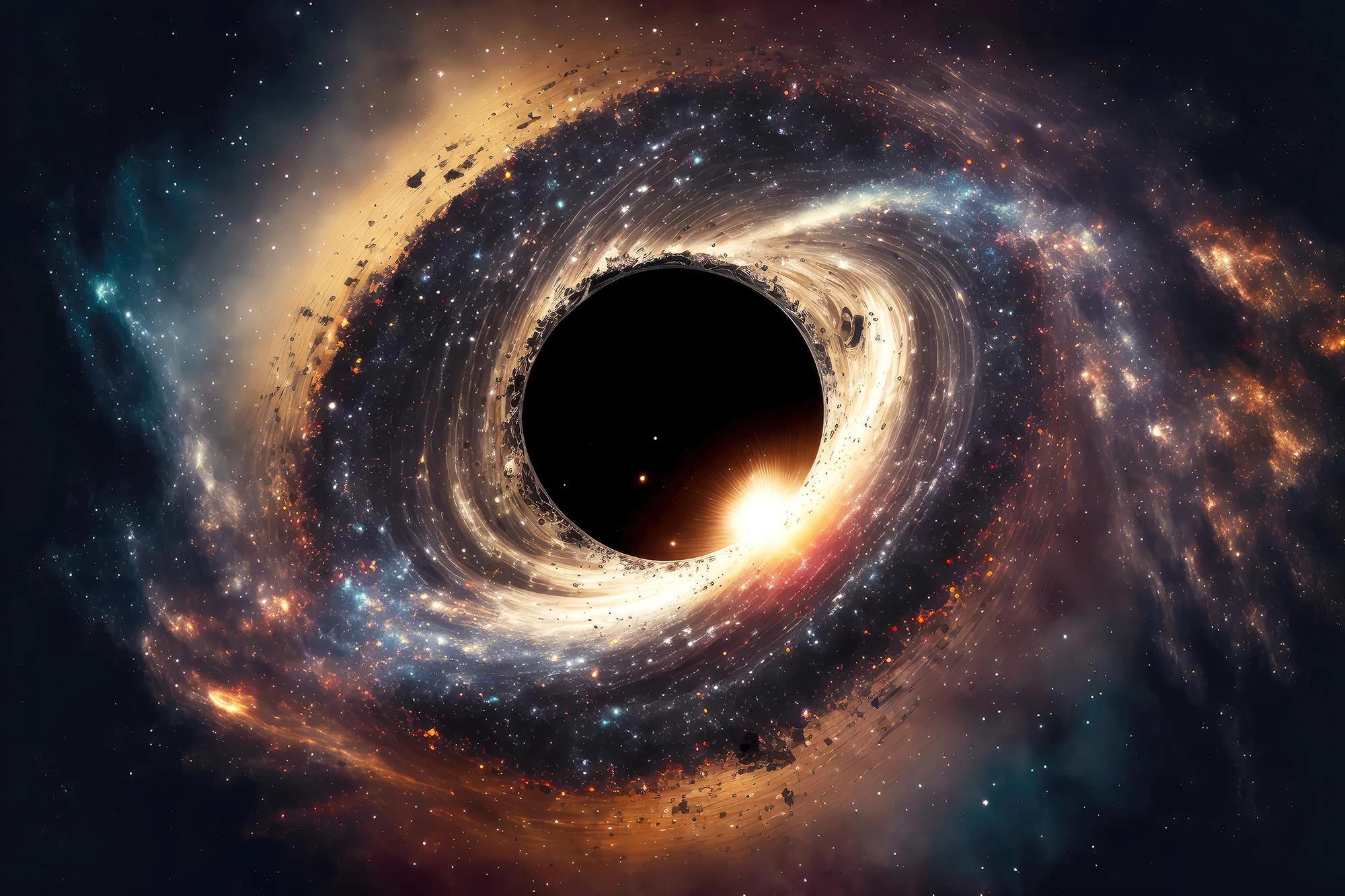Astronomers have made a groundbreaking discovery within our galaxy, identifying a black hole with a mass about 33 times that of the Sun. This makes it the largest stellar black hole known in the Milky Way, aside from the supermassive black hole at the galaxy’s center.
Located approximately 2,000 light-years away in the constellation Aquila, this massive black hole, now dubbed Gaia BH3, is relatively close by cosmic standards.
It was spotted thanks to its unique interaction with a nearby companion star, which exhibited a distinct wobbling movement observable from Earth. This discovery was achieved through data gathered by the European Space Agency’s Gaia mission, which is tasked with compiling a vast stellar census.
Further observations and validations were provided by the European Southern Observatory’s Very Large Telescope in Chile, among other facilities.
The black hole’s peculiarities extend beyond its mass. Notably, Gaia BH3 and its companion star move in a direction opposite to the typical orbital path of stars within the Milky Way.
According to Pasquale Panuzzo, a research engineer at the French research agency CNRS based at the Observatoire de Paris and the study’s lead author, this black hole exhibits several unusual characteristics that were previously unexpected.
Researchers believe Gaia BH3 originated from the collapse of a star initially more than 40 times the mass of the Sun. This type of black hole, formed from the gravitational collapse of a single massive star, is known as a stellar black hole.
While these are significantly smaller than the supermassive types found at the centers of most galaxies, such as the Milky Way’s Sagittarius A* (which boasts a mass four million times that of the Sun and resides about 26,000 light-years away), they still represent substantial cosmic phenomena.
The progenitor star of Gaia BH3 was composed almost entirely of hydrogen and helium, indicative of a star with a low metallicity — a trait typical of stars formed early in the universe’s history. The star likely originated around 2 billion years post-Big Bang, and its death led to a supernova explosion. This explosion propelled material into space while the core imploded to form Gaia BH3.
The companion star orbiting Gaia BH3 shares its ancient origins and possesses about 76% of the Sun’s mass. It is slightly cooler yet approximately 10 times more luminous.
The orbit of this star around the black hole is elliptical, ranging from about 4.5 astronomical units (AU) — with one AU being the average distance from Earth to the Sun — to 29 AU. This is in stark contrast to our solar system’s planets, like Jupiter and Neptune, which orbit at about 5 AU and 30 AU from the Sun, respectively.
Interestingly, Elisabetta Caffau, an astronomer at the Observatoire de Paris and co-author of the study, noted that the chemical composition of the companion star shows no particular anomalies, indicating it was likely unaffected by the supernova that produced the black hole.
The exact upper limits of mass for stellar black holes remain uncertain and are a hot topic within the scientific community. “The maximum mass for a stellar black hole is a matter of active scientific debate,” Panuzzo commented, underscoring the importance of this discovery in contributing to our understanding of stellar evolution and black hole formation.
I am an accomplished graduate of Strategic Studies, driven by a fervent dedication to comprehending global affairs and devising impactful strategies. Equipped with a comprehensive skill set encompassing research, critical thinking, and persuasive communication, I possess a distinctive viewpoint and an unwavering commitment to fostering inclusive decision-making processes. As a versatile individual, I excel in collaborating with diverse groups in various settings, leveraging my strong interpersonal abilities to adapt seamlessly to new environments and surmount any challenges that arise. With a passion for contributing to strategic initiatives, I am eager to leverage my expertise and drive to effect positive change within the field.










